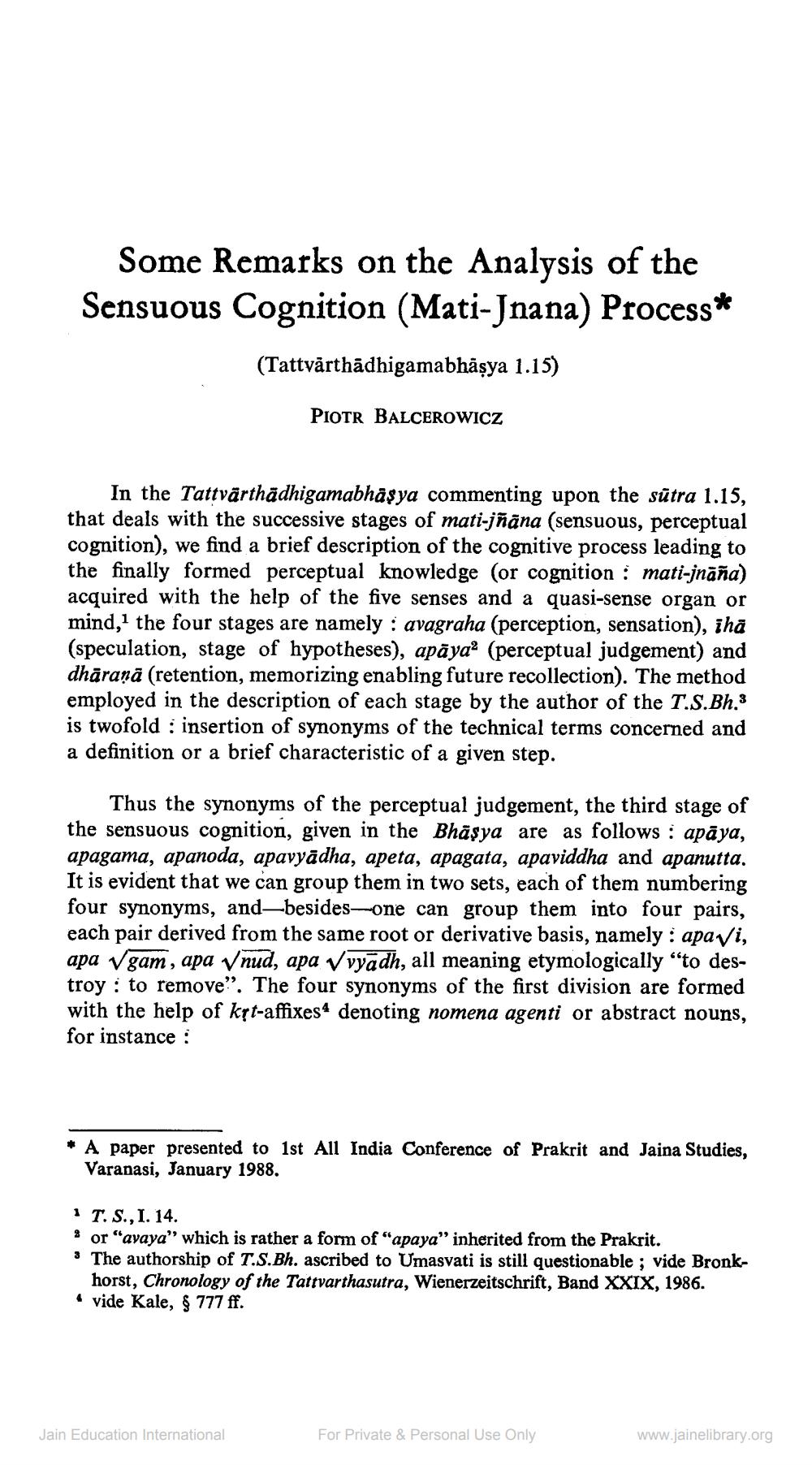________________
Some Remarks on the Analysis of the Sensuous Cognition (Mati-Jnana) Process*
(Tattvärthādhigamabhäsya 1.15)
PIOTR BALCEROWICZ
In the Tattvärthādhigamabhäşya commenting upon the sūtra 1.15, that deals with the successive stages of mati-jñāna (sensuous, perceptual cognition), we find a brief description of the cognitive process leading to the finally formed perceptual knowledge (or cognition : mati-ināña) acquired with the help of the five senses and a quasi-sense organ or mind, the four stages are namely : avagraha (perception, sensation), ihā (speculation, stage of hypotheses), apāya(perceptual judgement) and dhāraņā (retention, memorizing enabling future recollection). The method employed in the description of each stage by the author of the T.S.Bh.3 is twofold : insertion of synonyms of the technical terms concerned and a definition or a brief characteristic of a given step.
Thus the synonyms of the perceptual judgement, the third stage of the sensuous cognition, given in the Bhāşya are as follows : apāya, apagama, apanoda, apavyādha, apeta, apagata, apaviddha and apanutta. It is evident that we can group them in two sets, each of them numbering four synonyms, and—besides—one can group them into four pairs, each pair derived from the same root or derivative basis, namely : apavi, apa Vgam, apa Vnud, apa v vyādh, all meaning etymologically “to destroy : to remove”. The four synonyms of the first division are formed with the help of krt-affixes“ denoting nomena agenti or abstract nouns, for instance :
* A paper presented to 1st All India Conference of Prakrit and Jaina Studies,
Varanasi, January 1988.
1 T.S., I. 14.
or "avaya” which is rather a form of “apaya” inherited from the Prakrit. * The authorship of T.S.Bh. ascribed to Umasvati is still questionable ; vide Bronk
horst, Chronology of the Tattvarthasutra, Wienerzeitschrift, Band XXIX, 1986. 4 vide Kale, g 777 ff.
Jain Education International
For Private & Personal Use Only
www.jainelibrary.org




